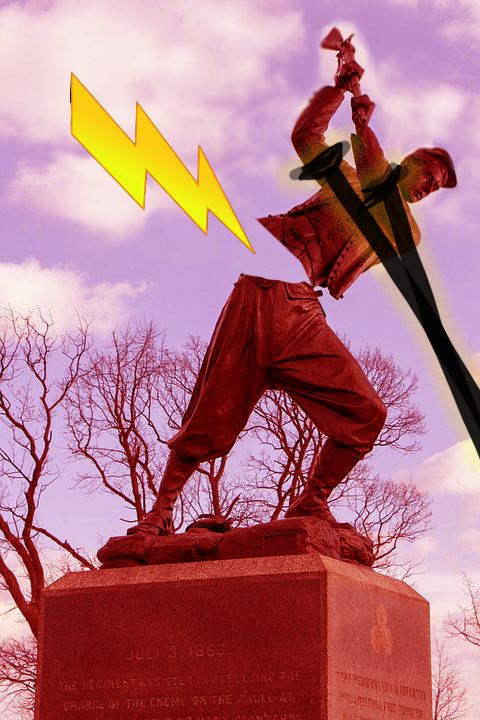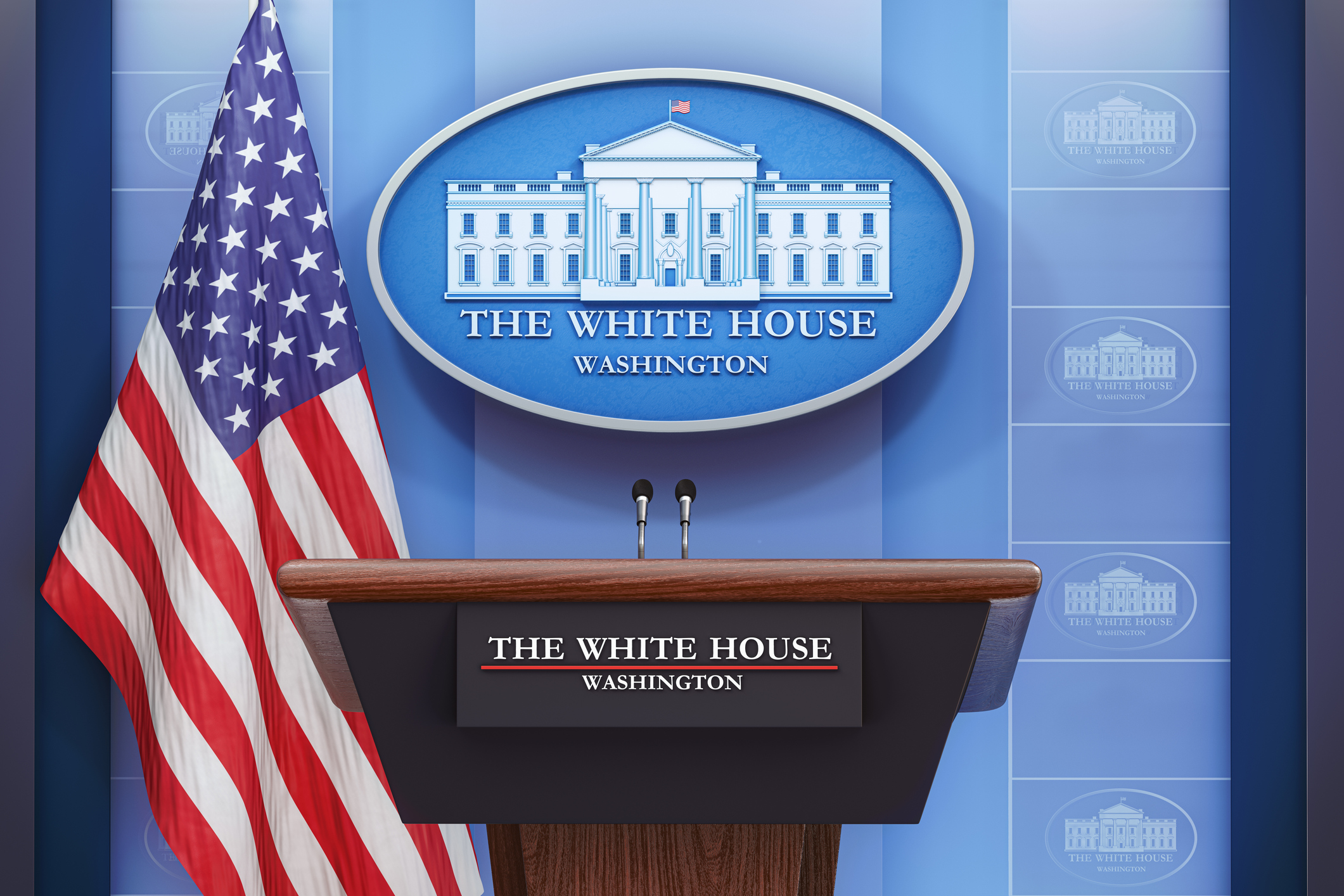
by: Ryan J. Stevens
George Floyd’s killing by police officers in Minneapolis sent waves through society and governments have reacted in turn. DMGS previously covered how lawmakers are reacting through police reform measures here and here. Another ripple effect has been the status of race relations and how society should remember historical figures and symbols. Across the country, national, state, and local governments have been reevaluating the symbols of the Confederate States of America and slavery as well as other public representations of white supremacy and white nationalism.
In 2019, the Southern Poverty Law Center (SPLC) released an updated report from their 2016 report identifying 1,747 public symbols of the Confederate States of America in the United States. This includes: 780 monuments, 103 public K-12 schools, and three colleges named after Robert E. Lee, Jefferson Davis, or other Confederate leaders, 80 counties and cities named after Confederates, 9 observed state holidays in five states, and 10 U.S. military bases named after Confederates.
How are lawmakers and states reacting to calls to reduce the number of Confederate and other racially divisive symbols?
Mississippi
The Mississippi state flag, adopted by the Legislature in 1894, is the last flag in the United States containing the Confederate battle emblem. The flag has been the topic of debate for years, including a 2001 voter referendum that saw 65% of voters supporting keeping the flag, compared to 35% in opposition.
In early June, Mississippi lawmakers began drafting legislation to change the flag, with the blessing of House Speaker Philip Gunn. While Speaker Gunn publicly supported changing the flag in 2015, numerous bills to change the flag have died in committee each session since.
However, House Bill 1796 made it through the Legislature in late June and was signed by Governor Tate Reeves. The bill mandates the removal of the current state flag and bans future use of the Confederate battle emblem. The bill creates the Commission to Redesign the Mississippi State Flag which will report its recommendation for a new design of the official state flag to the Governor and Legislature by September 14, 2020. The design will then be placed on the ballot in a special statewide election on November 3, 2020 and will include the national motto “In God We Trust,” rather than the Mississippi state motto, “Virtute et armis,” or “By Valor and arms.” Commentators have noted that the motto requirement would violate a basic principle of flag design, summarized by the North American Vexillological Association as “Never use writing of any kind.” If the ballot measure fails, the Commission will reconvene and produce another design for a new state flag.
Alabama
In Alabama, June 1 is a state holiday that honors Jefferson Davis, a Mississippian and president of the Confederate States. The state also has two other official state holidays that honor Confederate leaders and give employees the day off. The state celebrates Robert E. Lee, a Virginian, on the same day as Martin Luther King Day and Confederate Memorial Day in April. While Alabama is the last state to have its own holiday to honor the birth of Jefferson Davis, other states do celebrate him in some form, including Texas and Mississippi. Further, Florida, Kentucky, and Tennessee have a holiday for the Confederate president but do not give employees the day off.
Alabama Congresswoman Terri Sewell has called to end the state holiday celebrating Jefferson Davis, and Governor Kay Ivey said she is open to discussing changing the Confederate state holidays. The Governor also said she believes this issue should be decided by the Legislature, but recent efforts to change the holidays have failed.
In early March, Senate Bill 277 was introduced to change the observation of Robert E. Lee’s birthday to coincide with Columbus Day, rather than Martin Luther King Day. The goal of the bill, according to bill sponsor Senator Vivian Figures, is to have a day to honor Lee while not creating a new state holiday. Last year, a similar bill, House Bill 415, was introduced that would have separated celebrating Robert E. Lee and Martin Luther King on the same day by moving Lee’s state holiday to April. The bill died before advancing through the Legislature.
South Carolina
South Carolina previously flew the Confederate battle flag over the state Capitol, first doing so in 1962 in defiance of the Civil Rights Movement and desegregation. In 1994, the Republican primary featured a nonbinding referendum, which showed three out of four voters thought the flag should remain over the Capitol. In 1997, former Governor David Beasley proposed to remove the flag, but the state House rejected the proposal in favor of a bill calling for a referendum on the issue. His proposal called for moving the Confederate battle flag to a Confederate memorial on the Capitol grounds.
By the year 2000, the Heritage Act passed South Carolina’s state Legislature, removing the flag from above the Capitol but requiring it to be displayed on State House grounds next to a Confederate monument. The Act also requires a ⅔ majority in both legislative chambers to remove the flag and forbids doing so otherwise. Former Governor Nikki Haley later signed a bill removing the Confederate battle flag from Capitol grounds.
195 publicly sponsored symbols of the Confederacy were still in place in South Carolina in 2019, according to the Southern Poverty Law Center. In the last few years and now the last few months, calls have been made to remove various symbols and statues, including the John C. Calhoun monument from Marion Square in Charleston. The Heritage Act prevents this from happening without legislative approval.
More recently, state Representative Mike Burns wrote to South Carolina Attorney General Alan Wilson asking for a legal opinion on whether the Heritage Act is constitutional, following state Representative Todd Rutherford’s remarks that the Act is unconstitutional. Rutherford argues the Act is unconstitutional, so USC and Clemson do not need to seek approval from the Legislature to remove or change names/symbols/monuments. The Attorney General later issued his opinion that while the Heritage Act is constitutional, a monument of John C. Calhoun is not covered under the Act. The opinion also stated only the General Assembly can remove a monument, but the Calhoun monument does not fall under one of the protected categories in the Act.
Rhode Island
Did you know the official name of Rhode Island is “The State of Rhode Island and the Providence Plantations”? The name’s ties to slavery spurred Governor Gina Raimondo last month to issue Executive Order 20-48, titled “Rise Together – First Steps to a More Equitable and Resilient Rhode Island.” The Governor’s order removes the word “Plantations” in executive orders or citations or on its website, including on stationery. Further, all executive agencies will remove “Plantations” from their websites, stationery, electronic letterhead, and other official correspondence.
The order also notes that changing state’s official name requires voters to amend the Rhode Island Constitution.
S. 2902 was introduced last month by state Senator Harold Metts, which would place an amendment to the state Constitution on a ballot referendum, allowing voters to change the official name by removing the word “plantations.” Voters previously opposed a similar effort in 2010, with 78% opposing removing “Providence Plantations” from the official state name. S. 2902 passed the Senate in mid-June and is now in the House.
The Rhode Island Legislature is expected to convene for a special session later this month to address different issues, including changing the state’s official name. The state House has signaled it will move forward with the legislation from the Senate.
Pennsylvania
A Confederate flag was removed from the Pennsylvania State Capitol by order of Governor Tom Wolf in 2016, following controversy when the flag was part of a display of other historical flags to honor Flag Day.
More recently, Governor Wolf’s office and the Pennsylvania Historical and Museum Commission held discussions to remove four historical markers and monuments that recognize both Confederate troops and milestones in the Keystone State. Two will be taken down “as soon as possible,” according to the PHMC.
In the Legislature, state Representative Chris Rabb released a co-sponsor memo for a resolution calling for the removal of all Confederate monuments and statues in Pennsylvania. The resolution has yet to be formally introduced, but the memo notes there are Confederate monuments in Pennsylvania not included in the Southern Poverty Law Center’s list of Confederate monuments.
Congress
Congressional lawmakers are also looking to address this issue. H.R. 4179 would prohibit the use of federal funds for Confederate symbols, including the re-designation of 10 military installations such as Fort Benning, Fort Bragg, Fort Hood, Fort Lee, etc., named in honor of military leaders of the Confederate States of America. The legislation notes that there are 96 Confederate monuments in Virginia, 90 in Georgia, and 90 in North Carolina. There is also legislation – H.R. 7217 – pending that would remove statues honoring leaders and supporters of the Confederacy from the Capitol, something House Speaker Nancy Pelosi has called for.
Further, the Senate Armed Services Committee adopted an amendment in mid-June to the National Defense Authorization Act (NDAA) that would create a commission tasked with renaming military installations that bear Confederate names and removing Confederate symbols. President Donald Trump has threatened to veto the bill if it included renaming military bases. Republicans supported the amendment and have indicated no willingness to remove the provision to rename bases from the bill, despite a veto threat from the President.
Further, it was recently reported that the Pentagon is working on drafting a policy to ban the display of Confederate flags at military bases. The Marine Corps and U.S. Force Korea have already prohibited the display of the Confederate battle flag, and the U.S. Navy has indicated plans to follow suit. The Army, on the other hand, has been opened to renaming its bases named after members of the Confederacy.
What does the future look like?
The way in which Americans honor their virtues and ideals is ever changing, from the Lincoln Memorial to the Statute of Liberty. The 2016 report by the Southern Poverty Law Center identified 114 Confederate symbols that were removed following the Charleston church shooting in 2015, and 1,747 that still stood. Will that number decrease in response to George Floyd’s killing and recent protests racism in America? Or will displays of such symbols increase, as they did in reaction to the Civil Right Movement in the 1950s and 1960s?
Latest News
Photo credit: iStock.com/Bet_Noire On January 20, 2025, Donald Trump was inaugurated as the 47th President of the United States, marking the beginning of a second term in office. Trump immediately set the tone for the [...]
Photo credit: iStock.com/Castle City Creative The U.S. president's cabinet is a cornerstone of the executive branch, serving as the president’s closest advisors and leaders of the federal government’s major departments and agencies. Established through [...]
Photo credit: iStock.com/Maha1450 In honor of Presidents’ Day, there is no better time than now to reflect on the significant legislative and executive achievements of our nation's leaders. Throughout the last nearly 250 years, each [...]
Photo credit: iStock.com/yevtony Last week, the National Governors Association (NGA) elected Utah Governor Spencer Cox (R) as its new Chair and Colorado Governor Jared Polis (D) as NGA Vice Chair. Cox succeeds New Jersey Governor [...]






Stay In Touch